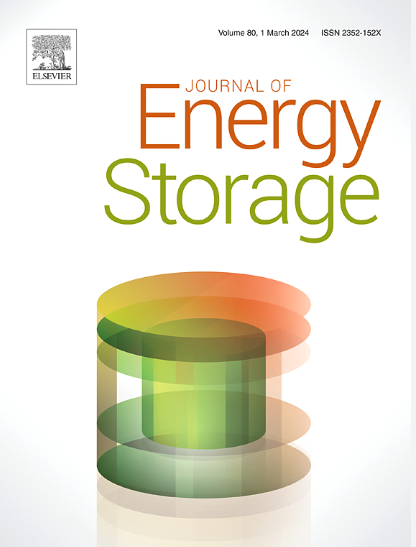基于超声导波和卷积神经网络模型的电池缺陷检测
IF 8.9
2区 工程技术
Q1 ENERGY & FUELS
引用次数: 0
摘要
储能电池在调节现代电网中起着至关重要的作用。然而,储能系统面临诸多安全风险,电池安全是制约其广泛应用的主要因素。为了保证这些电池在使用过程中的安全性,本文提出了一种基于超声导波和卷积长短期记忆(ConvLSTM)神经网络模型的电池缺陷检测方法。利用锆钛酸铅(PZT)超声换能器激发电池内部的超声导波,利用激光多普勒振动仪(LDV)接收来自电池表面的超声信号,捕捉超声导波在物体内部的整个传播过程。为了提高模型的鲁棒性,采用了数据增强技术。通过增加袋式电池测试样本的数据,模型训练的有效图像数量从3400张增加到15300张。为了从缺陷电池数据集中学习,防止训练过程中的梯度爆炸,本文提出了一种基于U-Net模型的算法,该算法结合了时空信息。该算法引入了ConvLSTM模块,使模型能够从时间序列图像中学习和保留时间特征,并基于超声导波的传播特性对电池内部缺陷进行分割和识别。实验结果表明,该方法具有较好的电池内部缺陷识别效果,其交叉集并度(IoU)为80.32%,像素精度(PA)为96.47%。该方法为储能电池的安全测试或退役电池的安全鉴定提供了一种方便、准确的实施方案。本文章由计算机程序翻译,如有差异,请以英文原文为准。
Battery defect detection using ultrasonic guided waves and a convolutional neural network model
Energy storage batteries play a crucial role in regulating modern power grids. However, energy storage systems face numerous safety risks, with battery safety being the primary constraint on their widespread application. To ensure the safety of these batteries during operation, this paper presents a battery defect detection method based on ultrasonic guided waves and a Convolutional Long Short-Term Memory (ConvLSTM) neural network model. By utilizing lead zirconate titanate (PZT) ultrasonic transducers to excite ultrasonic guided waves within the battery and employing a laser Doppler vibrometer (LDV) to receive ultrasonic signals from the battery surface, the entire propagation process of the ultrasonic guided waves within the object is captured. To enhance the robustness of the model, data augmentation techniques are applied. By augmenting the data from pouch battery test samples, the number of effective images for model training was increased from 3400 to 15,300. To learn from the dataset of defective batteries and prevent gradient explosion during training, this paper proposes an algorithm inspired by the U-Net model, which incorporates spatiotemporal information. The algorithm introduces a ConvLSTM module, enabling the model to learn and retain temporal features from time-series images, and to segment and identify internal battery defects based on the propagation characteristics of ultrasonic guided waves. Experimental comparisons demonstrate that the proposed method excels in identifying internal defects in batteries, with an intersection over union (IoU) of 80.32 % and a pixel accuracy (PA) of 96.47 %. This method provides a convenient and accurate implementation scheme for the safety testing of energy storage batteries or the safe appraisal of retired batteries.
求助全文
通过发布文献求助,成功后即可免费获取论文全文。
去求助
来源期刊

Journal of energy storage
Energy-Renewable Energy, Sustainability and the Environment
CiteScore
11.80
自引率
24.50%
发文量
2262
审稿时长
69 days
期刊介绍:
Journal of energy storage focusses on all aspects of energy storage, in particular systems integration, electric grid integration, modelling and analysis, novel energy storage technologies, sizing and management strategies, business models for operation of storage systems and energy storage developments worldwide.
 求助内容:
求助内容: 应助结果提醒方式:
应助结果提醒方式:


